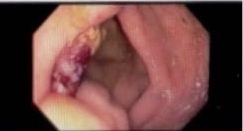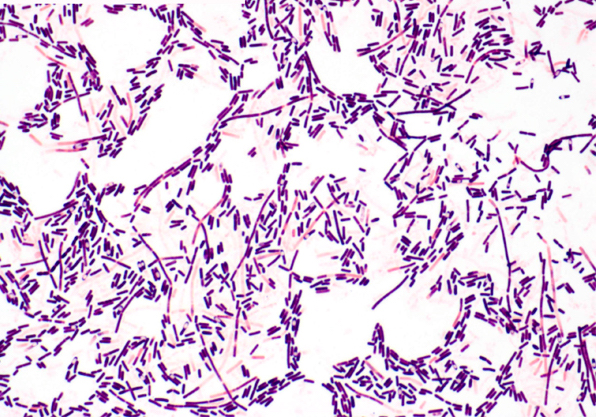Tuesday Poster Session
Category: Infections and Microbiome
P5602 - Clostridioides septicum Myositis: A Warning Sign of Hidden Colon Cancer
Tuesday, October 28, 2025
10:30 AM - 4:00 PM PDT
Location: Exhibit Hall
.jpg)
Surya Pratik Nuguru, MBBS
Shasta Regional Medical Center
Redding, CA
Presenting Author(s)
Surya Pratik Nuguru, MBBS, Shams Najibi, MD, Prathibha Chandrasekaran, MD
Shasta Regional Medical Center, Redding, CA
Introduction:
Clostridium septicum is a gram positive, gas-forming, spore-forming anaerobic organism that can cause spontaneous necrotizing infections, especially in immunocompromised individuals.Unlike Clostridium perfringens, C. septicum can invade healthy tissue without preceding trauma and is highly associated with gastrointestinal malignancies.This case report highlights the clinical presentation, management, and oncologic implications of a C. septicum infection.
Case Description/
Methods:
A 60-year-old male presented to the Emergency Department with acute, worsening left-sided chest pain radiating to the shoulder. On arrival, he was hypertensive, tachycardic, tachypneic and febrile. Initial labs were notable for leukocytosis, acute kidney injury, elevated CRP and ESR.He became increasingly confused and agitated with labored breathing necessitating emergent endotracheal intubation.Shortly after, the patient developed rapidly progressing swelling, erythema, and violaceous discoloration of the left upper extremity, raising concern for necrotizing fasciitis and underwent emergent surgical debridement.Intraoperative cultures grew Clostridium septicum. His ICU course was complicated resulting in prolonged ventilator and dialysis dependence. Given the known association between C.septicum and occult gastrointestinal malignancy, colonoscopy was performed following clinical stabilization. It revealed two tubular adenomas, and a suspicious cecal mass.Biopsy of the cecal has confirmed a high-grade dysplastic lesion consistent with colorectal adenocarcinoma.
Discussion: Studies have shown that between 50%-87.5% of C. septicum infections are associated with underlying malignancies [1].In a review of 162 cases, 81% of patients with C.septicum infection had an associated malignancy, with 34% specifically having colorectal carcinoma and 40% presenting with hematologic malignancies [1]. The unique relationship between gastrointestinal malignancies and C. septicum involves multiple pathophysiological processes.Tumor-induced mucosal ulceration disrupts the intestinal barrier, allowing bacterial translocation from the bowel to the bloodstream [3].
C. septicum infections carry a significantly higher mortality rate (56-60%) compared to other clostridial infections (26%) [1].Given the strong association with malignancy, any patient with C. septicum infection without a clear underlying etiology should undergo thorough investigation for occult malignancy, particularly colonoscopy to evaluate for colorectal cancer.

Figure: Colonoscopic Image Of The Cecal Mass

Figure: Clostridium septicum, Gram stain
Disclosures:
Surya Pratik Nuguru indicated no relevant financial relationships.
Shams Najibi indicated no relevant financial relationships.
Prathibha Chandrasekaran indicated no relevant financial relationships.
Surya Pratik Nuguru, MBBS, Shams Najibi, MD, Prathibha Chandrasekaran, MD. P5602 - <i>Clostridioides septicum</i> Myositis: A Warning Sign of Hidden Colon Cancer, ACG 2025 Annual Scientific Meeting Abstracts. Phoenix, AZ: American College of Gastroenterology.
Shasta Regional Medical Center, Redding, CA
Introduction:
Clostridium septicum is a gram positive, gas-forming, spore-forming anaerobic organism that can cause spontaneous necrotizing infections, especially in immunocompromised individuals.Unlike Clostridium perfringens, C. septicum can invade healthy tissue without preceding trauma and is highly associated with gastrointestinal malignancies.This case report highlights the clinical presentation, management, and oncologic implications of a C. septicum infection.
Case Description/
Methods:
A 60-year-old male presented to the Emergency Department with acute, worsening left-sided chest pain radiating to the shoulder. On arrival, he was hypertensive, tachycardic, tachypneic and febrile. Initial labs were notable for leukocytosis, acute kidney injury, elevated CRP and ESR.He became increasingly confused and agitated with labored breathing necessitating emergent endotracheal intubation.Shortly after, the patient developed rapidly progressing swelling, erythema, and violaceous discoloration of the left upper extremity, raising concern for necrotizing fasciitis and underwent emergent surgical debridement.Intraoperative cultures grew Clostridium septicum. His ICU course was complicated resulting in prolonged ventilator and dialysis dependence. Given the known association between C.septicum and occult gastrointestinal malignancy, colonoscopy was performed following clinical stabilization. It revealed two tubular adenomas, and a suspicious cecal mass.Biopsy of the cecal has confirmed a high-grade dysplastic lesion consistent with colorectal adenocarcinoma.
Discussion: Studies have shown that between 50%-87.5% of C. septicum infections are associated with underlying malignancies [1].In a review of 162 cases, 81% of patients with C.septicum infection had an associated malignancy, with 34% specifically having colorectal carcinoma and 40% presenting with hematologic malignancies [1]. The unique relationship between gastrointestinal malignancies and C. septicum involves multiple pathophysiological processes.Tumor-induced mucosal ulceration disrupts the intestinal barrier, allowing bacterial translocation from the bowel to the bloodstream [3].
C. septicum infections carry a significantly higher mortality rate (56-60%) compared to other clostridial infections (26%) [1].Given the strong association with malignancy, any patient with C. septicum infection without a clear underlying etiology should undergo thorough investigation for occult malignancy, particularly colonoscopy to evaluate for colorectal cancer.

Figure: Colonoscopic Image Of The Cecal Mass

Figure: Clostridium septicum, Gram stain
Disclosures:
Surya Pratik Nuguru indicated no relevant financial relationships.
Shams Najibi indicated no relevant financial relationships.
Prathibha Chandrasekaran indicated no relevant financial relationships.
Surya Pratik Nuguru, MBBS, Shams Najibi, MD, Prathibha Chandrasekaran, MD. P5602 - <i>Clostridioides septicum</i> Myositis: A Warning Sign of Hidden Colon Cancer, ACG 2025 Annual Scientific Meeting Abstracts. Phoenix, AZ: American College of Gastroenterology.
